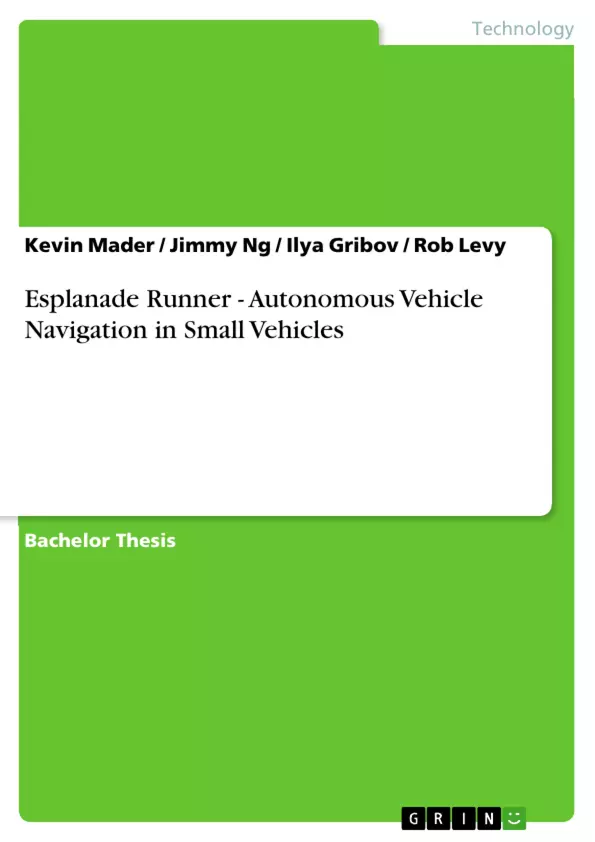The task of autonomous vehicle navigation coupled with obstacle avoidance is a notoriously difficult problem involving communication with a variety of sensors and a motor control system in real time. Our project is to create a system that will enable a mobile platform to navigate a given route, while avoiding obstacles in its path.
Inhaltsverzeichnis (Table of Contents)
- Introduction
- System Layout
- System Communication
- System Specifications
- Proposal Specifications
- Specifications as Tested
- Project Budget
- Hardware and Sensors
- Schematic and Wiring
- Mounting
- Compass Sensor
- Acoustic Sensors
- GPS Unit
- Site Selection for Testing
- Power Systems
- MCU
- Functionality
- Programming and Debugging
- Programming
- Debugging
- Issues
- PDA
- Introduction
- Functionality
- Programming and Debugging
- Issues
- RouteDraw Web Tool
- Functionality
- Programming and Debugging
- Issues
- Simulation Tools
- Functionality
- Full System Simulation
- PDA Testing Simulation
- Programming and Debugging
- Issues
- Basic System Operation
- Site Selection
- Route Drawing
- Loading PDA
- Running the Esplanade Runner
- Issues
- A Component Specification Sheets
- B Specification Discussion
- C Future Steps
- RouteDraw Web Tool
- Glossary
Zielsetzung und Themenschwerpunkte (Objectives and Key Themes)
This manual presents the final design and implementation of the Esplanade Runner, a senior design project for the Electrical and Computer Engineering department at Boston University. The project aimed to create a robotic system that could autonomously navigate a predetermined route. This involved the development of hardware and software components, including a microcontroller, sensors, a PDA interface, and a web-based route drawing tool.
- Robotic System Design and Implementation
- Autonomous Navigation
- Hardware and Software Integration
- Sensor Data Processing and Control
- Human-Machine Interface (HMI) Development
Zusammenfassung der Kapitel (Chapter Summaries)
The first chapter of the manual provides an introduction to the Esplanade Runner, outlining its objectives, system layout, communication architecture, and specifications. Chapter two delves into the hardware and sensors used, detailing the schematic, wiring, mounting, and functionality of key components like the compass sensor, acoustic sensors, GPS unit, and power systems. Chapter three focuses on the microcontroller (MCU), exploring its functionality, programming, debugging, and any encountered issues.
Chapter four details the PDA interface, describing its functionality, programming, debugging, and any issues. Chapter five covers the RouteDraw web tool, exploring its functionality, programming, debugging, and any issues. Chapter six dives into the simulation tools used for both the full system and the PDA testing, outlining their functionalities, programming, debugging, and any issues. Chapter seven outlines the basic operation of the system, covering site selection, route drawing, PDA loading, and running the Esplanade Runner.
Schlüsselwörter (Keywords)
The Esplanade Runner project focused on the development of a robotic system, autonomous navigation, hardware and software integration, sensor data processing and control, and human-machine interface design. The manual details various aspects of this project, including the use of a microcontroller, compass sensor, acoustic sensors, GPS unit, PDA interface, and a web-based route drawing tool.
- Quote paper
- BS Kevin Mader (Author), Jimmy Ng (Author), Ilya Gribov (Author), Rob Levy (Author), 2007, Esplanade Runner - Autonomous Vehicle Navigation in Small Vehicles, Munich, GRIN Verlag, https://www.grin.com/document/110833



